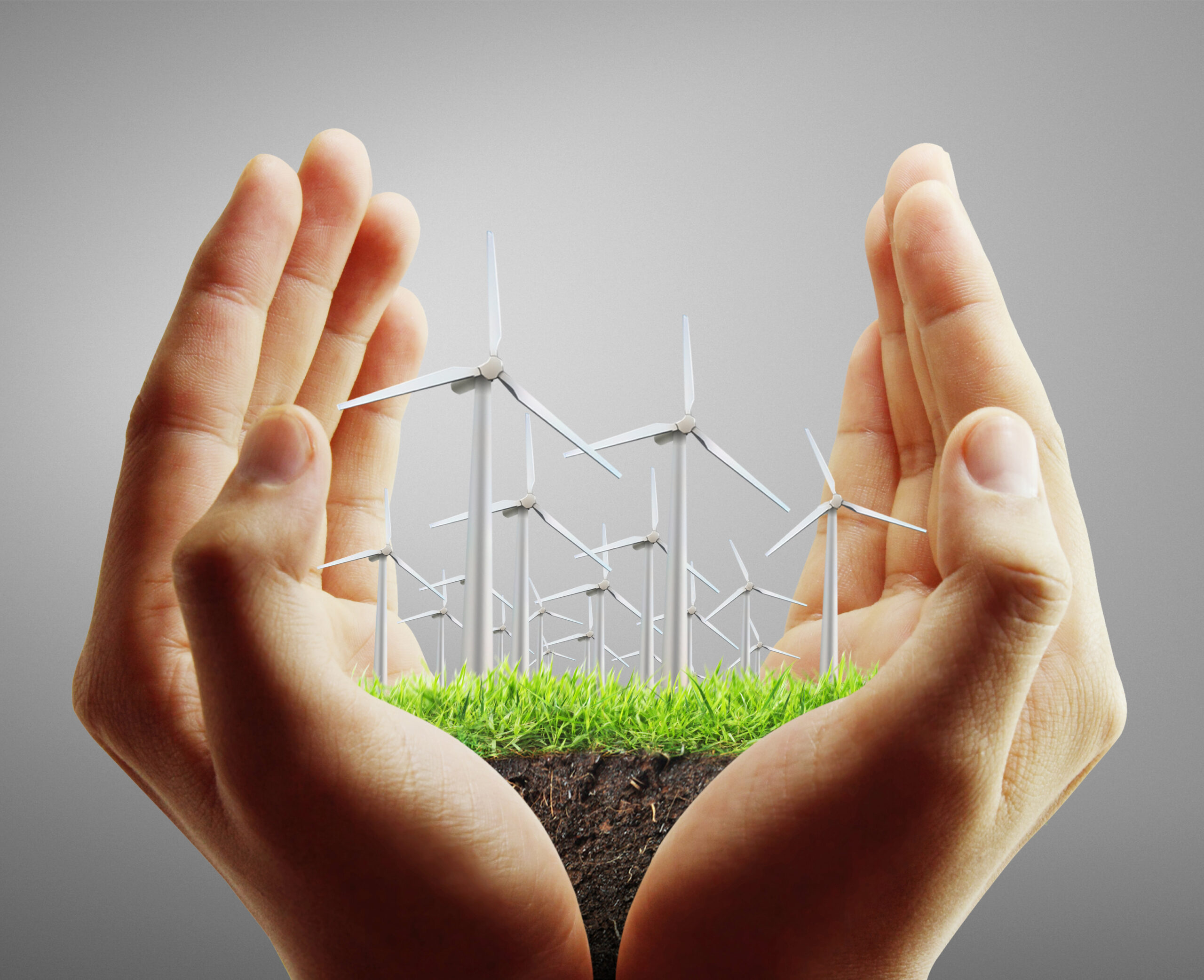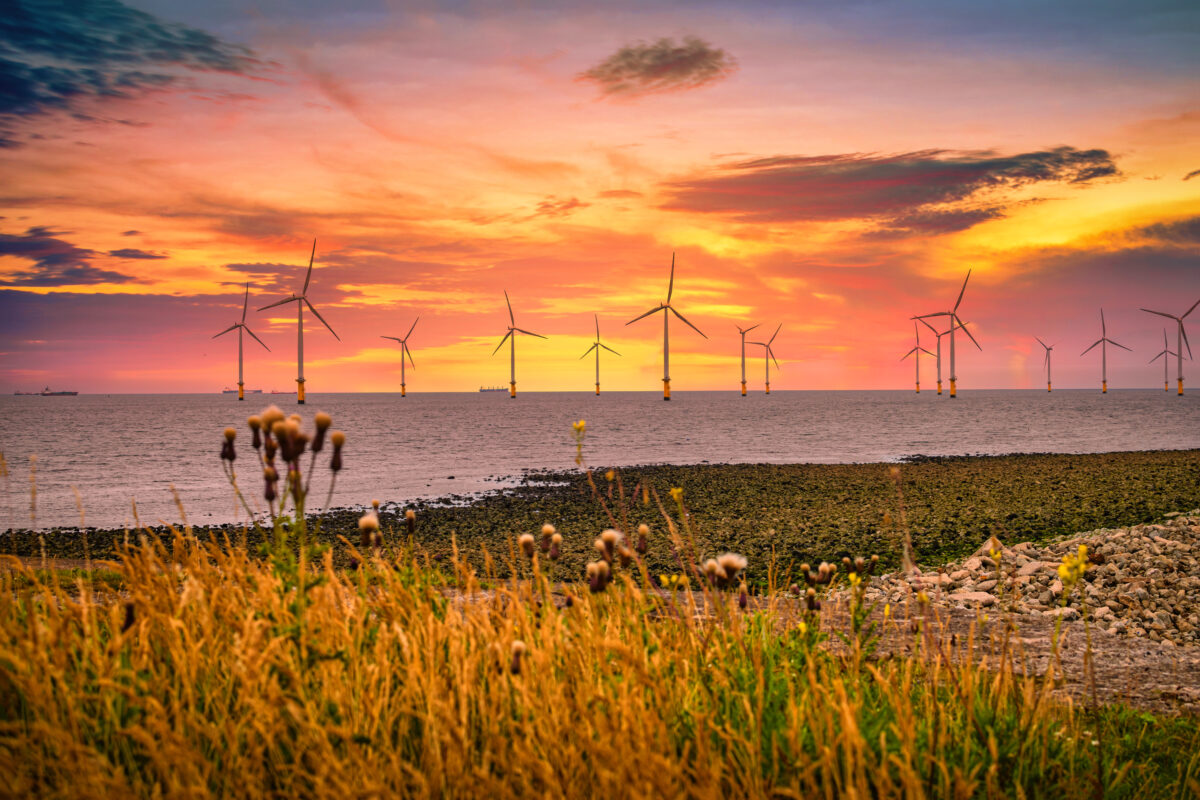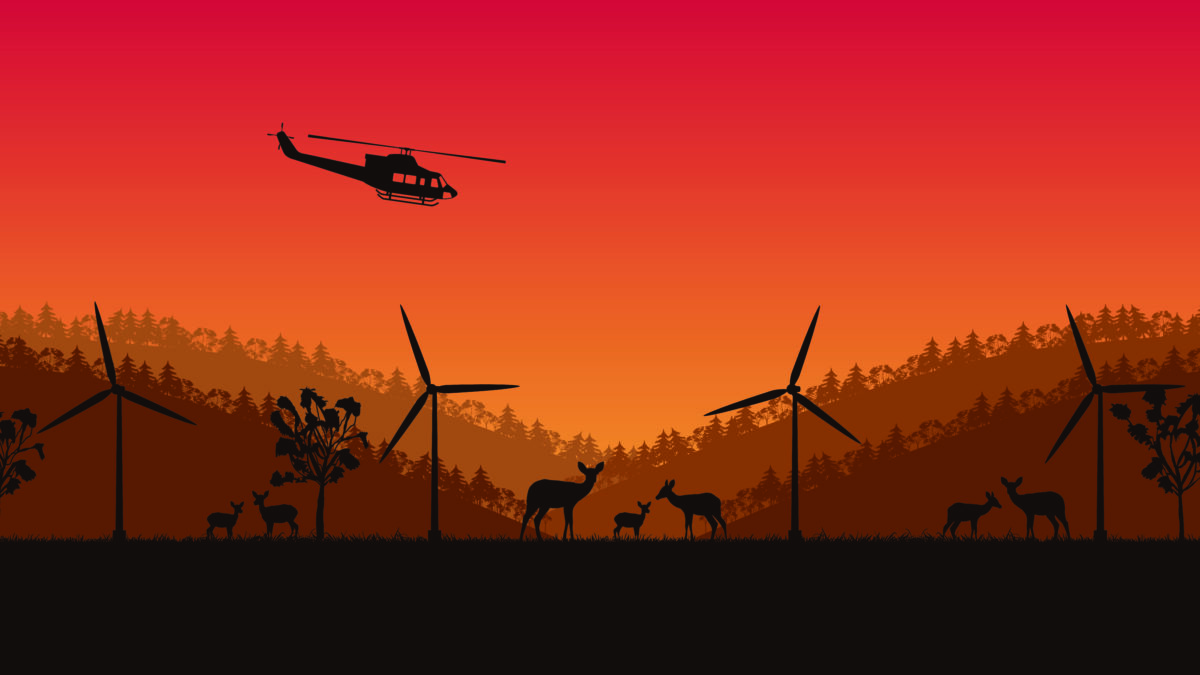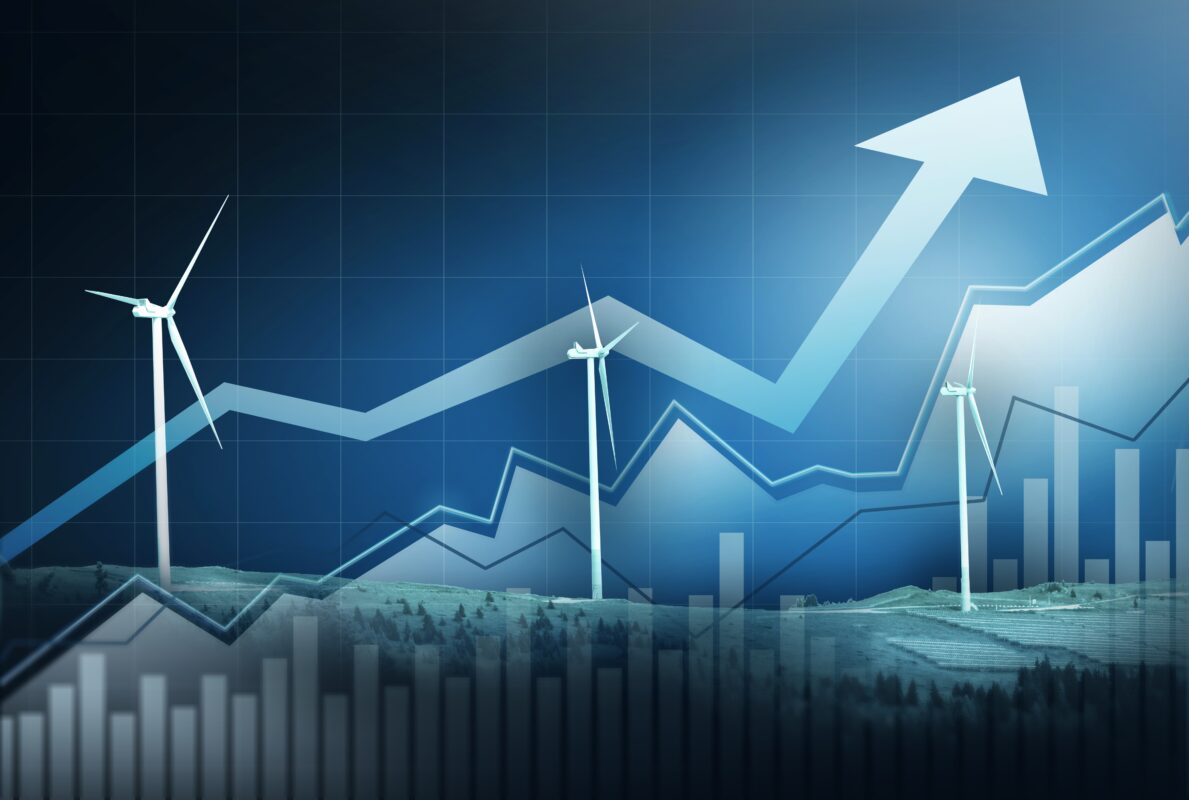For many years, generating power from wind energy has been surrounded by many controversial opinions. Most of them have nothing to do with the truth. The fact is, however, that wind farms have an impact on the environment – using wind energy is not entirely neutral for people, animals and plants. But the impact is mostly positive. What are the main wind energy pros and cons for the environment? Find it out, reading this article!
What is wind energy and how is it generated
To analyze how wind turbines affect the environment, first you need to know how they operate. Wind turbines are devices that are able to produce electrical energy from kinetic energy from wind. It is possible thanks to blades, installed vertically or horizontally, which are moved by the blowing wind. As they rotate, they pass the energy to a rotor and generator, where it’s transformed into electricity.
All the process seems eco-friendly and free from environmental hazards. And, in general, it is. Wind turbines technology is free from CO2 emissions and use of fossil fuels. We cannot, however, say that wind energy is free from environmental impact. Today we will explore this topic to show you all the wind energy pros and cons, in the context of the environment.
How do wind turbines affect the environment?
With no hesitation, we can state that environmental impacts of wind energy do exist. But they are not limited to what comes to mind as a first association: noise or threats to birds passing in the neighbourhood. In this article, we will show you all the most important wind energy pros and cons.
Environmental benefits of wind energy
Let’s start with the positive environmental impact of wind turbines. The main benefit from using wind energy is that it replaces the energy generated from fossil fuels. This results in lower carbon emissions in general, but also in less pollution in the area of a wind farm. It positively affects the lives of plants, animals and human beings. Using renewable energy sources, like wind, has also a beneficial effect for inanimate nature. Unlike conventional solutions, generating energy from wind doesn’t require extracting resources from underground.
Reduction in carbon footprint by renewable energy
In conventional energy systems, emission of greenhouse gases (mostly carbon dioxide, but also methane and nitrogen oxide) is inevitable. CO2 and others are generated in the process of burning fossil fuels: natural gas, carbon, oil. Carbon footprint – a value showing total amount of emitted greenhouse gases – is relatively high in fossil fuels-based energy systems.
Shifting toward wind turbine technology can significantly reduce carbon dioxide emissions. Wind energy systems don’t use fossil fuels to operate, so they don’t emit greenhouse gases during the whole lifespan period.
How can the scale of carbon footprint reduction be estimated? In order to do so, we need to consider the amount of electric power generated by a wind turbine and compare it with the same amount of conventional power.
Research shows that the lifecycle greenhouses emissions are around 11 grams of CO2 per kWh for wind farms and 980 g/kWh for coal power plants. The difference is very clear, although you may ask why wind turbines leave carbon footprints at all. It’s because greenhouse emissions at the stage of manufacturing, transport, installation and waste storage after the end of operation. Still, the amount of CO2 emissions is almost 10 times lower, when compared to conventional energy systems.
Read more about wind turbines vs fossil fuels carbon footprint on our blog.
Contribution to sustainability goals
Sustainable Development Goals have been established by United Nations in 2015. They apply to actions that will lead to reduce poverty, hunger, discrimination and to protect the planet and its wildlife. How can wind energy support these goals?
Its contribution is greater than we could expect. Impact on goals like:
– Affordable and Clean Energy;
– Industry, Innovation and Infrastructure;
– Climate Action;
doesn’t require a deeper explanation. But energy transition and focusing on renewable energy sources means much more than that. It also has an indirect impact on the following Sustainable Development Goals:
– No Poverty – by providing clean, free energy to the developing countries;
– No Hunger – by providing easy-accessible energy for agriculture in areas with no connection to power grid;
– Good Health and Well-Being – by reducing greenhouse and toxic gases emissions;
– Decent Work and Economic Growth – by increasing local employment in green turbines factories;
– Responsible Production and Consumption – by reducing use of non-renewable resources, like coal, natural gas or oil.
Interested in wind energy but unsure how to get started? Contact us today to book your free consultation!
Impact on wildlife and habitats
When we consider the wind turbines’ impact on wildlife and its habitats, we need to see a big picture. This means considering not only the positives, but also negatives. How do wind energy systems affect wildlife?
Much has been said about the negative impact on bats and birds killed by moving blades. But not everyone knows about much smaller, but still meaningful, animal beings suffering from contact with wind turbines. These are insects – as German researchers calculated, even 1,200 tons (of 24,000 tons flying through wind farms in Germany) of them are killed every year. It may not seem a large number, but in a 1-2 decades perspective it can strongly affect the number of insects throughout the country – and it can disrupt the balance in the environment.
It’s natural that wind farms require some space to operate, but it doesn’t mean that the whole area needs to be excluded as a habitat. Wind turbine’s blades span is about 5-6 metres and they can operate efficiently and safely (without turbulences) only if the sufficient space between devices is kept. It is said that the perfect distance is at least 7 diameters of rotors. This means that the total land area of a wind farm doesn’t equal the direct impact area. The free spaces, not occupied by infrastructure, can be used for agricultural purposes.
Visual and noise pollution issues
Wind energy is much cleaner than conventional power. It has, however, a downside: wind turbines generate noise that can affect wildlife and human beings. There are two types of noise, according to their sources: mechanical, caused by the rotating blades, moving rotor, gear box and generator, and aerodynamic, caused by the wind passing through the blades. This issue has been a point of interest for researchers for many years. Noise pollution is also a matter of concern for people living in the neighborhood of wind farms.
The noise level noted in the wind farms is comparable to the one noted in big city centers, caused by traffic or industry. The problem is that the wind turbines are usually situated outside the cities, in the places where many animal species, also those rare and endangered, live. Noise generated by working turbine may be a cause of:
– increased level of stress hormones, leading to aggressive, anti-predatory behaviors;
– reduced efficiency of finding and handling food;
– problems with animals’ communication;
– decreasing population – mostly of birds, but also of mammals;
– avoiding the habitat, which leads to reducing biodiversity in a certain area.
Impact of the small wind technologies on the environment
It’s worth emphasizing that not every kind of wind turbine affects the environment in the same way. It all depends on its size and – most of all – technology. The correlation is not always obvious: two small wind turbines don’t emit the same noise as a large one. It’s more about the materials used for manufacturing, the shape of blades and the rotation speed. Let’s explore the matter of technology affecting the environmental impact of wind turbines.
Innovative features and advancements
The environmental impact of wind turbines on wildlife has been widely researched. The outcomes of that research helped to reduce bird and bats deaths. Biologists found that bats are more active when wind speeds are low. Designing eco-friendly wind turbines that stay motionless at the times of low winds can reduce bats deaths by even a half – and, what’s important, it doesn’t significantly affect the effectiveness of power generation.
Environmental considerations in design
One of the challenges that wind turbines designers are facing is reducing environmental impact resulting from waste storage. When components are made from non-recyclable materials, they are a source of greenhouse gases emissions after the period of operation.
Another problem that needs to be solved is the aerodynamic and mechanical noise generated by the blades. Designers should focus on changes that will help to reduce noise pollution. It can be achieved by changing the blades’ shapes and materials used for manufacturing.
Want to fully benefit from new wind turbines technologies and innovations in design? We will help you to make first steps on the path to sustainable, eco-friendly solutions. Contact us here to schedule your free survey and explore the benefits of wind energy!
FREEN’s technology and its benefits over conventional turbines
In FREEN we also make a contribution to reduce negative environmental impact and obtain goals of sustainability. At the stage of designing and manufacturing our versatile small wind turbines, we focus on providing not only high-power output, but also low noise and safety for animals.
Numbers are proof of that: a typical wind turbine generates noise of 35-45 dB, measured from a distance of 300 meters. For our products, it’s also 35-45 dB – but heard from the distance of as far as 100 meters! This makes our small vertical wind turbines perfect for installation on rooftops and other places close to human settlements.
One of our priorities is balancing high capacity and minimizing ecological harm. FREEN wind turbines’ blades rotate at a speed of 108 revolutions per minute, which makes them much safer for bats, birds and insects.
Another innovation in FREEN technology meets the need of wind turbines recycling. We use metal to manufacture our products, so they can be sold and recycled after the operational period.
Future developments and trends
Future directions in turbine design
Innovations in wind turbine technology focus on obtaining as high capacity as possible. Higher hubs and longer blades help to capture more wind energy and using resistant materials reduces the impact of rain, humidity or frost in regions with severe weather.
But designers face many more challenges than that. We can assume that one of future directions in wind turbine design will be focusing on reducing noise level, using recyclable materials and extend a lifespan of the devices. Noise reduction and providing safety for animals issues can be solved by designing blades that rotate with lower speeds or remain motionless unless the wind speed is high.
Potential solutions to environmental concerns
Innovations in wind turbine design are only one of possible solutions to environmental issues. They will be more effective if they go hand in hand with some law regulations. Planning and regulatory tools that can (and, in some countries, are already) be used are, for example:
– installing acoustic walls that help to limit the dispersion of noise;
– zoning of wind farms – specifying minimal distance from valuable habitats;
– constant monitoring of environmental impact on wildlife.
Balancing environmental impact and renewable energy goals
The role of wind energy in obtaining sustainability goals is undisputable. But so is the negative impact on some elements of the environment. The main issue for the next few years is developing technologies that will help to reduce this impact. If we achieve this goal, we will be able to benefit from clean wind energy with no remorse. And we will answer the question: “are wind turbines eco-friendly” without a shadow of doubt.









